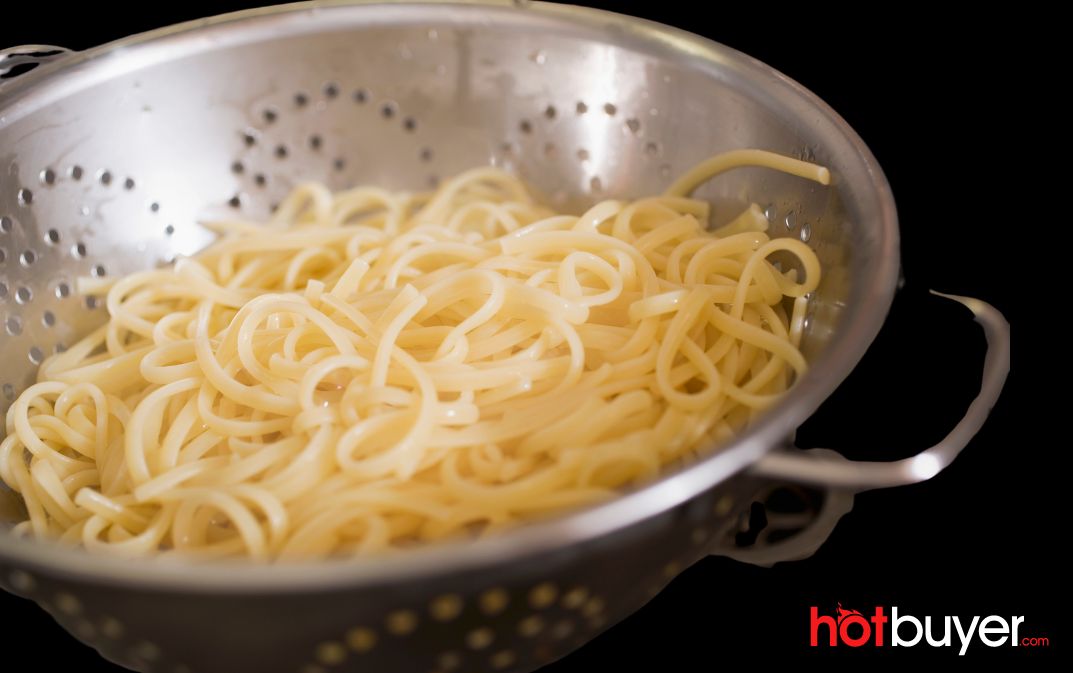In the ballet of boiling water and dancing noodles, the pasta strainer plays a pivotal role, often overlooked yet indispensable. This humble kitchen accessory, essential in the art of pasta making, ensures that your culinary creations maintain their integrity from pot to plate. Let’s delve into the world of pasta strainers, exploring how this simple tool can elevate your pasta dishes to gastronomic masterpieces.
The Unsung Hero of the Kitchen
The pasta strainer, often taken for granted amidst the flamboyance of sauté pans and the sharpness of chef’s knives, is the cornerstone of pasta perfection. It’s the silent sentinel that guards against the mushiness of overcooked pasta and the sogginess of residual water, ensuring each strand or shape retains its al dente allure.
Choosing Your Culinary Companion: Types of Pasta Strainers
Not all strainers are created equal, and the choice of a pasta strainer can significantly influence the texture and taste of your pasta. From the traditional colander to the innovative clip-on, each type offers its own set of advantages:
- The Classic Colander: With its ample size and sturdy handles, the classic colander is perfect for draining large batches of pasta, providing ample space for steam to escape and prevent overcooking.
- The Mesh Strainer: Ideal for finer pastas like angel hair or orzo, the mesh strainer offers a tighter weave, ensuring even the smallest pasta doesn’t slip through the cracks.
- The Clip-On Strainer: A modern twist on traditional straining, the clip-on strainer attaches directly to your pot, making it easier to handle and reducing the risk of kitchen mishaps.
The Material Matters: Stainless Steel vs Silicone
When it comes to pasta strainers, the material is more than a matter of aesthetics; it influences the tool’s durability, ease of cleaning, and even the taste of your pasta:
- Stainless Steel Strainers: Known for their durability and resistance to rust, stainless steel strainers are the workhorses of the kitchen, promising years of reliable service.
- Silicone Strainers: Lightweight and flexible, silicone strainers are gentle on your pots and pans, preventing scratches. They’re also heat-resistant, making them safe for use with boiling water.
Beyond Pasta: The Versatility of Strainers
While pasta strainers are designed with noodles in mind, their utility extends far beyond the pasta pot:
- Vegetable Rinser: Use your strainer to rinse fresh vegetables, ensuring they’re clean and ready for your next culinary creation.
- Fruit Washer: Delicate fruits like berries can be gently washed in a strainer, removing dirt while preserving their fragile exteriors.
- Cheese Drainer: For homemade cheese enthusiasts, a fine-mesh strainer is essential for draining whey, ensuring your cheese has the perfect consistency.
Mastering the Strain: Tips for Perfectly Drained Pasta
Achieving perfectly drained pasta every time is an art form. Here are some tips to help you master the strain:
- Shake It Off: After draining, give your strainer a gentle shake to remove any lingering water, ensuring your pasta isn’t waterlogged.
- Reserve a Cup: Before draining, reserve a cup of pasta water. This starchy liquid is a secret ingredient for creating silky, emulsified sauces that cling to your pasta.
- Quick Rinse: For cold pasta dishes, a quick rinse under cold water can stop the cooking process, preserving the pasta’s texture.
The Art of the Strain
A pasta strainer, in its essence, is more than a kitchen tool; it’s a gateway to culinary excellence. By choosing the right strainer and mastering the techniques of straining, you ensure that every pasta dish you craft is a testament to your skill and passion for cooking.
In the dance of steam and boiling water, let your pasta strainer lead the way, turning simple ingredients into extraordinary meals. Embrace the art of the strain, and watch as your kitchen becomes a stage for gastronomic wonders, one perfectly drained pasta at a time.

